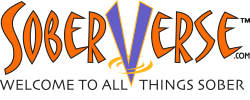The Rising Abuse of Opiates
Opiates are a class of drug derived from the opium plant, and they are extensively used medically to treat pain. Opiates come in many forms ranging from legitimate prescription painkillers to illegal substances like heroin. Regardless of the form they take, opiates bring with them many risks and the strong possibility of addiction. It’s important that people understand what’s causing the rising instances of opiate abuse and addiction in the United States.
Legitimate Uses for Opiates
Although opiates can be addictive and can lead to major health problems, it’s important to remember that they do, at times, have a legitimate medical purpose. Some opiates are prescription painkillers, and these medications are vital to help patients who are suffering from extreme pain. Opioid painkillers might be used to reduce discomfort immediately following surgery, for instance, or to help individuals who were involved in a major accident.
Exploring the Rise of Opiate Abuse and Addiction
The rapid growth of opiate abuse and addiction in the United States, and indeed around the world, is something of a recent phenomenon. By some estimates, there are more than 36 million people across the planet who abuse opiates, and many of these individuals have developed addictions that are virtually impossible to break without intervention and professional assistance.
While it may be impossible to pinpoint a singular cause of the rising numbers of opiate abuse, there are certainly plenty of contributing factors. Perhaps the largest of all is a lack of understanding and education regarding the potency of opiates. People may inherently know that things like cocaine are addictive and dangerous, but those same people might not have the same view toward opiates, particularly if they are legal painkiller medications.
Another major factor contributing to rising opiate abuse is the ease of access. Opiates are a controlled substance, but many individuals are able to get prescriptions and then resell opiates to others. Or, patients who are legally prescribed opiate medications may save some pills, which can then be stolen from bathroom cabinets or bedside tables.
Never underestimate the role of the physician in this growing epidemic. Some experts suggest that physicians prescribe opioid medications too often, and in cases where it’s not medically necessary. This contributes both to the amount of opiates in existence and the likelihood of abuse.
Identifying Commonly Abused Opiates
Opiates are an entire class of drug that are available in many different varieties, including prescription medications and illegal street drugs like heroin. By identifying and learning about each type, individuals can be aware of what substances to avoid or use with caution, even when prescribed by a medical professional.
Oxycodone is one of the most common forms of opiates in the United States, with more than six million prescriptions annually. This drug is typically taken in pill form, and formulations of it appear in brand name drugs like Oxycontin and Percocet. Oxycodone is one of the fastest-growing opiates abuse in the country. While it is prescribed for pain relief, it’s often taken recreationally.
Codeine is another opioid medication that is prescribed in large numbers. Typically in a purple liquid form, codeine is used by a staggering 10% of all Americans every year. Like many other opioid painkillers, it’s used to treat severe pain but is widely abused for recreational purposes. Immediate side effects of codeine include dizziness, drowsiness, constipation and nausea.
Vicodin is another opioid painkiller, and one that has more than two million addicts in the United States alone. Vicodin is a mixture of acetaminophen, a painkiller, and hydrocodone. Vicodin comes in pill form, but it is sometimes crushed and administered in alternative methods for a more direct or lasting high.
Morphine, also sometimes called block or cube, is an analgesic opiate that can be injected directly into the bloodstream or ingested by mouth. Morphine is used in emergency medical situations, such as surgeries, but is widely abused. Seizures, convulsions and extreme nausea are common with prolonged use.
Heroin is the only opiate on this list that is entirely illegal and has no legitimate medical purpose. However, it is similar in many ways to each of the opiate drugs listed above. More than four million Americans have used heroin, and the addiction rate is more than one-quarter of all users.
Understanding the Root Causes of Opiate Addiction
Aside from the inherently addictive nature of opiates, there are some reasons that contribute to the cause of opiate addiction. Most significant is the fact that many medical patients start by using opioid medications completely legally and under the recommendation of a physician. Over time, however, addiction can develop. Some individuals lie about their health, buy or steal medication, or turn to alternatives like heroin.
There may also be genetic, social and cultural factors that can lead to the development of addiction. Some research suggests that individuals can be genetically predisposed to the formation of a drug addiction. Mental health disorders or a history of trauma can also increase the likelihood of becoming addicted to substances like opiates.
Treatment for Opiate Abuse and Addiction
Treating an addiction to opiates is incredibly challenging. Some experts argue that an opioid addiction is one of the hardest to break, but it’s possible. The key is acknowledging the need for professional help in a licensed, accredited facility.
Detox will often be the first step toward recovery from an opiate addiction. This is the process when individuals struggling with addiction cease all opioid consumption. Although withdrawal symptoms are common and can be difficult, this stage is vital in the quest for health and lasting sobriety.
There is no denying the rising epidemic of opiate abuse and addiction. Opiates come in several varieties, each as addictive as the next. Through proper treatment, however, opiate addiction can be overcome, allowing patients to regain control over their health and their lives.
